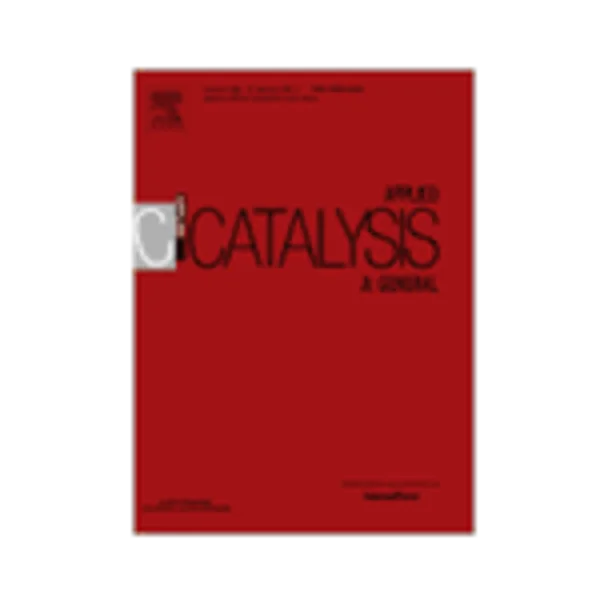-
synthesis gas production to desired hydrogen to carbon monoxide ratios by tri-reforming of methane using ni–mgo–(ce,zr)o2 catalysts
جزئیات بیشتر مقاله- تاریخ ارائه: 1392/07/24
- تاریخ انتشار در تی پی بین: 1392/07/24
- تعداد بازدید: 990
- تعداد پرسش و پاسخ ها: 0
- شماره تماس دبیرخانه رویداد: -
this paper highlights the performance of ni–mgo–(ce,zr)o2 tri-reforming catalysts under various reaction conditions and explains results using catalyst characterization. testing under controlled reaction conditions and the use of several catalyst characterization techniques (bet, xrd, tpr, sem-eds, and xps) were employed to better explain the effects of the synthesis parameters on the reaction performances. the support ce:zr ratio, metal loading techniques, metal wt%, and ni:mg ratios all had a pronounced influence on the catalyst performance. an even ratio of ce:zr for the support and an even ratio of ni:mg gave the best performance. the wet impregnation method consistently showed more resistance to coke formation when compared to the deposition precipitation method, but the difference was attributed to a better ability to load mg by wet impregnation. lower than previously reported h2o concentrations in the feed gas composition also led to desired h2:co ratios needed for ft synthesis while maintaining high conversions of co2 and resistance to coke formation. high ghsv (61,000 h−1) yielded significantly higher h2:co ratios when compared to reactions run at lower ghsv (25,000 h−1). these results suggest that steam reforming reactions are kept further from equilibrium at higher ghsv and result in higher h2 production. the tested tri-reforming catalyst produced desired h2:co ratios with minimal deactivation, high reactant conversions, and extended catalyst lifetime.
مقالات جدیدترین رویدادها
-
استفاده از تحلیل اهمیت-عملکرد در ارائه الگوی مدیریت خلاقیت سازمانی و ارائه راهکار جهت بهبود
-
بررسی تاثیر ارزش وجوه نقد مازاد بر ساختار سرمایه شرکت های پذیرفته شده در بورس اوراق بهادار تهران
-
بررسی تأثیر سطح افشای ریسک بر قرارداد بدهی شرکت های پذیرفته شده در بورس اوراق بهادار تهران
-
بررسی تأثیر رتبه بندی اعتباری مبتنی بر مدل امتیاز بازار نوظهور بر نقد شوندگی سهام با تأکید بر خصوصی سازی شرکت ها
-
تأثیر آمیخته بازاریابی پوشاک ایرانی بر تصویر ذهنی مشتری پوشاک ایرانی (هاکوپیان)
-
بررسی رابطه بین سبک روابط کاری و سبک رهبری با جو سازمانی و نوآوری سازمانی در یک سازمان صنعتی
-
دیدگاه پزشکان عمومی در مورد وضعیت و انگیزه های شرکت کنندگان در برنامه های بازآموزی و چگونگی اجرای آن
-
استخراج آب از منابع زیرزمینی بر اساس مدیریت هزینه (مطالعه موردی: دشت سیلوانا-زیوه)
-
بررسی تئوری شهرسازی در جهت معماری (نمونه موردی کرمان)
-
استفاده از انرژی خورشیدی در ساختمان
مقالات جدیدترین ژورنال ها
-
مدیریت و بررسی افسردگی دانش آموزان دختر مقطع متوسطه دوم در دروان کرونا در شهرستان دزفول
-
مدیریت و بررسی خرد سیاسی در اندیشه ی فردوسی در ادب ایران
-
واکاوی و مدیریت توصیفی قلمدان(جاکلیدی)ضریح در موزه آستان قدس رضوی
-
بررسی تاثیر خلاقیت، دانش و انگیزه کارکنان بر پیشنهادات نوآورانه کارکنان ( مورد مطالعه: هتل های 3 و 4 ستاره استان کرمان)
-
بررسی تاثیر کیفیت سیستم های اطلاعاتی بر تصمیم گیری موفق در شرکتهای تولیدی استان اصفهان (مورد مطالعه: مدیران شرکتهای تولیدی استان اصفهان)
-
نشانه های بصری معراج پیامبر در نگارگری عثمانی، مطالعه ی موردی نسخه اسکندرنامه ی احمدی
-
دستیابی به شاخص های مطلوب سکونت شهری در بافت های فرسوده تاریخی ایران؛ نمونه موردی: بافت فرسوده تاریخی شهر اردبیل
-
همبستگی بین نگرش های مذهبی و سلامت عمومی در دختران مقطع دبیرستان
-
ساخت و تحلیل دستگاه اندازه گیری و مقایسه ضربه کلت
-
modelling of bonded post-tensioned concrete cantilever beams under flexural loading




سوال خود را در مورد این مقاله مطرح نمایید :